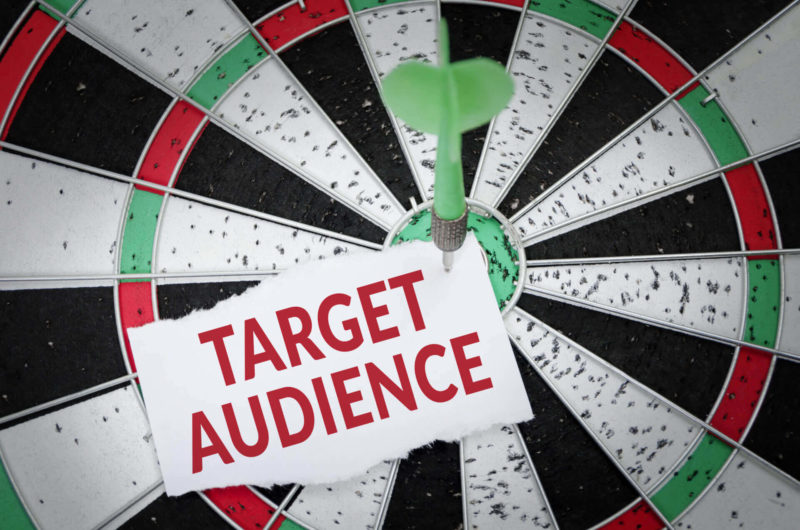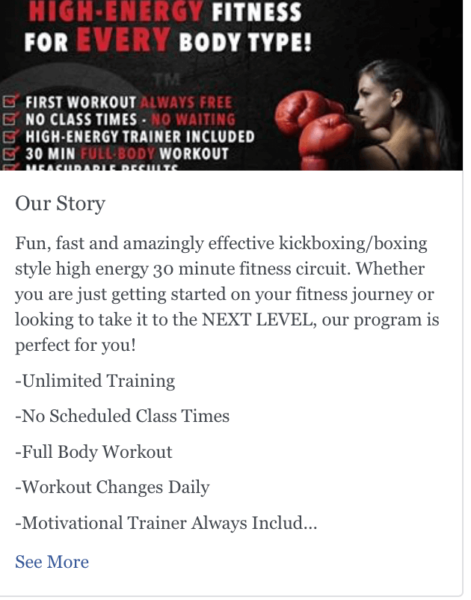Target acquired: How to define and use your ideal target market
Don't assume you know who makes up your target audience because you could be wrong. Here's a look at how to identify a target market and create niched marketing campaigns that sell.
 Ironically enough, when it comes to promoting themselves, many businesses jump straight into marketing and forget to really think about the most important part of marketing: their target market.
Ironically enough, when it comes to promoting themselves, many businesses jump straight into marketing and forget to really think about the most important part of marketing: their target market.
This problem isn’t just limited to new entrepreneurs or start-ups, either. I’ve talked to plenty of well-established companies who can only describe their target market in broad generalities.
This is a real problem because knowing exactly who you’re targeting with your marketing is the key to successfully reaching, connecting with and convincing them to buy what you’re selling. So, while it’s tempting to jump right into building your marketing campaigns and putting together creative, it always pays to stop and think about your target market first.
In this article, we’re going to take a look at how to identify your target market and use what you know about that market to create target marketing campaigns that sell.
Who am I targeting?
Whether you’re a new business or a decades-old company putting together a new ad campaign, you should always be asking yourself “who am I targeting?” Even if you sell products with broad appeal, this question is still important. Specifics sell and the more specifics you know about the market you are targeting, the more effective your marketing will be.
For example, if you sell lotion, you might think that your target market is too big to define. I mean, almost everyone gets dry hands at some point, right?
While that might be true, there are a lot of different reasons why people buy lotion. Some people live in a dry climate. Some have a skin condition like rosacea. Some people want a lotion that smells good, while others want a scent-less lotion because scented lotions irritate their skin.
Would it make sense to use the same marketing for all of these different groups?
Even if your scent-less lotion happens to be great for people who live in a dry climate or have rosacea, it’s hard to effectively market to all of these markets simultaneously. After all, if someone searches for “rosacea lotion” on Google, they aren’t looking for lotion because they live in a dry climate. They want a lotion that will treat their specific skin condition.

Even within a more targeted market segment like “rosacea sufferers”, there is often room to refine your target market further. For example, you’d want to use very different marketing tactics to market your lotion to moms with young children suffering from rosacea than you would if you were trying to sell to middle-aged men with the condition.
Can you see why understanding your target market is so important? The more clearly and precisely you can answer the question “who am I targeting?”, the more focused and effective your marketing will be. Obviously, you have to balance market size with market specificity, but understanding who you are targeting and what motivates them is the key to create compelling marketing campaigns.
With all that in mind, here are a few easy questions you can ask yourself to help you define your target market(s):
How do my current customers use my product or service?
As I mentioned above, even people who use your product or service for the same thing may use it for different reasons or in different ways. For example, if you offer invoicing software, you may have some customers who use it for every client and transaction, while others only use it for certain clients or situations.
Odds are, invoicing software addicts are probably your most valuable customers and you will want to both target them more aggressively and with different messaging than you would more casual users. Your software will be an integral part of their business, so certain selling points about your software will appeal more to them than they would to your standard users.
Segmenting your current customer base by how they use your product or service can give you a lot of insight into your target market(s). Odds are, if your current customers love your business for a particular reason, potential customers who are motivated by the same things will be likely to respond to marketing that focuses on that same issue.
What am I trying to sell?
This might seem like an obvious part of any marketing campaign, but when it comes to defining your target market, knowing what you are trying to sell is important, especially if you’re changing what you are selling. Many businesses try to use old marketing tactics to sell a new product and then wonder why their results are bad.
Whether you’re trying to market something new or simply get more sales for a particular product or service, it’s important to think about who your new target market is. Different products and services appeal to different audiences, so even small tweaks to what you’re selling can have big effects on how well your marketing works.
For example, if you sell cookies and decide to add organic, egg-free cookies as a new product, you need to market them differently than your standard cookie line.
Let’s be honest, most people who buy organic, egg-free cookies aren’t buying them because they are the best tasting cookies. They care about the ingredients more than the flavor, so your marketing should focus on how healthy and environmentally friendly your cookies are.
At the same time, if most of your customer base loves the flavor of your standard cookies, they aren’t likely to start buying your organic cookies because they are environmentally friendly. They want the delicious cookies they know and love, so you should focus on marketing the flavor of your core cookie offering to your less ingredient-conscious target market.
Ultimately, what you are trying to sell has a huge impact on how you sell it and who you sell it to. As a result, “what am I trying to sell?” should be one of the first things you ask yourself during the marketing process.
What is the competition doing?
While I’m a big advocate for standing out from the competition, you can also learn a lot from the competition—both about what to do and what not to do.
For example, take a look at the ad below:

You can clearly see that this business is targeting high-intensity people who probably lead high-intensity, busy lifestyles. To appeal to this market, their ad copy is high energy and focused on the flexibility of their offering.
If you happen to be a competitor of theirs, there’s a lot you can learn from this. On the one hand, if you want to target the same market, you can look for keywords or phrases they are using to try and catch the attention of their target audience.
Alternatively, if you want to differentiate yourself and try to target an alternative market, you could try focusing on price, a different exercise option or offering lower-key classes that might appeal to less intense potential customers.
Whether it’s a gym down the street or an international conglomeration, your competition can teach you a lot about who your target market is (or should be) and how to approach them in your marketing.
Is my target market niche … or non-existent?
One final thing to keep in mind as you identify your target market is the size of that market. As we discussed earlier, the narrower your target market is, the easier it is to create specific, highly targeted messaging for them. However, if you can only target 10 people with that messaging, it may not be a market worth targeting.
Given the massive reach of online advertising platforms like Facebook and Google, this isn’t a common problem, but it is something to keep in mind as you define your target market(s). If you find yourself struggling to effectively target the market you’ve selected, you may need to take a step back and expand your audience a bit.
As a general rule of thumb, I like to assume that 3 percent of the people you can target with a given marketing channel are ready to buy today and 3 percent can probably be convinced to buy. If that 3 to 6 percent of your identified target market isn’t enough potential business to be worth your time and money, your market is probably too niche to be useful.
Conclusion
While it can be easy to assume you know who your target market is and what they want, taking the time to really think about what you’re selling, who you’re selling it to and how to best sell it can significantly improve your marketing results. It might not be the most glamorous or exciting part of marketing, but it’s a key part of every good marketing campaign.
Contributing authors are invited to create content for MarTech and are chosen for their expertise and contribution to the martech community. Our contributors work under the oversight of the editorial staff and contributions are checked for quality and relevance to our readers. MarTech is owned by Semrush. Contributor was not asked to make any direct or indirect mentions of Semrush. The opinions they express are their own.
Related stories